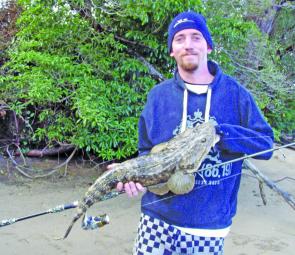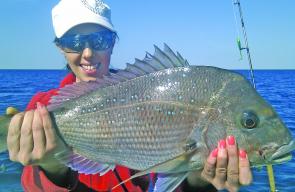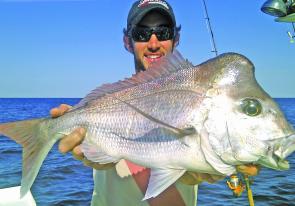With the holiday hordes soon to descend on the east coast, the wise angler would make the most of the last of the uncrowded fishing opportunities.
Some fast-moving fingers of warm water will now be pushing south, with temperatures around 20° to 21° starting to elbow the cold stuff away until next Winter.
Already good numbers of bonito have been hunting the washes, chasing all manner of baitfish and falling to those keen on casting metal lures toward the horizon.
Last season we witnessed one of the best runs of bonito numbers and size for many years. Days when 40 or 50 fish were caught and released were quite common and sometimes the fish averaged a whopping 4kg.
A number of standout fish were landed after finding big live slimy mackerel baits too good to refuse. Normally a 6kg or 7kg bonnie would be a one-off monster but last season at least a dozen were captured off my local ledge.
I suspect that the odd school of bonito hung around right throughout Winter, as talk of them only waned for a handful of weeks when the water dropped to 15°.
This is great news for the new season because the fish should be equally as big and just as plentiful.
If you have never fished for bonito or similar small to middleweight pelagic fish like striped tuna, salmon, tailor or kingfish, now might be a good time to have a crack at a really enjoyable part of the sport.
You don’t need overly expensive gear or have to go to extreme locations to wet a line and be successful.
If you’d like to get into it, probably fish 8kg to 10kg line classes for starters. This will give you a good chance of landing the fish but still provide line light enough to cast a fair distance.
For my money braid is far superior to mono or gelspun lines but all will work so run with what you are comfortable with and can afford.
Choose a reel with a reasonably quick gear ratio so you don’t have to break into a sweat trying to impart some action into a lifeless piece of metal.
Rods should have some extra length to aid casting, as well as coping with fishing at times several metres higher than sea level.
Most lures will work on their day, depending on what the bonito are feeding on, so it pays to have a number of sizes and weights to choose from. Anything from 25g to 85g will do the trick.
Persistence is the name of the game when spinning metals, so if you can cast for a solid hour or two you will definitely score consistently on all manner of pelagic fish.
When you do hook your first bonito, relax and enjoy the battle because they are not overly dirty fighters. Let them run as much as they like on a modest drag setting and they will be much easier to land by the time you get them to the rocks.
If you do find yourself in the midst of a hot bite, be mindful of the fish you keep because you can easily catch cricket score numbers. Please release what won’t meet your immediate needs.
Some good jewfish to 9kg have still been hooked off the rocks and in the rivers and this action should continue this month, particularly in the Clyde River.
Good concentrations of baitfish and prawns will be located in the deep bends where fast eddies of current provide the jewfish the perfect ambush situation.
The jewfish can then simply hold station deep in the water out of the main current and wait patiently for the food to come to them without expending too much energy.
What this means to the thinking fisho is to work out how to successfully deliver a lure or bait to that zone where the jewfish hang. Think like a fish and you will definitely catch more, I guarantee it!
Big bream are also on fire in the estuaries, with finding those same baitfish and prawns the key to multiple hook-ups. As with most forms of fishing, find the bait and you will find the fish.
Surface lures will certainly be worth a shot this month with prawns and terrestrial insects high on the bream menu.
Oyster racks, weed beds and shallow rock bars are key areas to target over the next few months in the lower reaches. Tree snags in the upper reaches will also house some big blue-nosed bruisers, too.
Reads: 1761
Ross Noakes scored a sensational PB flathead while kayaking on the Clyde River. Plenty of fish like these will be on the chew throughout South Coast estuaries.

Snapper will be more common in slightly deeper water for the next few months.

Cracking knobby snapper will still be viable for those able to head out wide.




